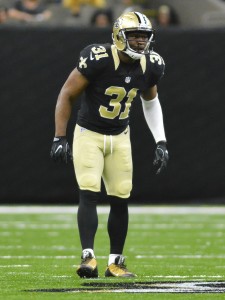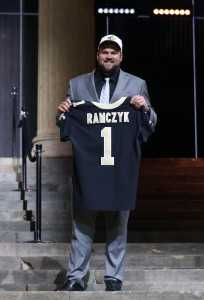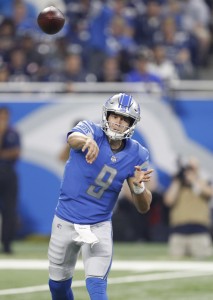Steelers Favorites For CB Joe Haden
The Steelers have emerged as a “possible contender” for free agent cornerback Joe Haden, whom the Browns released earlier today, according to Aditi Kinkhabwala of NFL.com (Twitter link). In fact, Pittsburgh is considered the “favorite” to land Haden, tweets Adam Schefter of ESPN.com.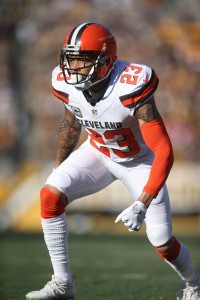
[RELATED: Steelers Acquire TE Vance McDonald]
While Pittsburgh boasts a number of intriguing young options in their secondary, the club’s pass defense lacks a true No. 1 cornerback at present. Of course, it’s not apparent that Haden fits that definition anymore, as he graded as the No. 88 corner among 110 qualifiers in 2016, per Pro Football Focus. And if the Steelers are looking for reliability, they won’t get it with Haden, who’s missed 14 games over the past two seasons.
But the Steelers apparently believe Haden still has production left to over: per Kinkhabwala, Haden has number of advocates in Pittsburgh, including wide receiver Antonio Brown. Plus, Haden should come on the cheap, as he’s already guaranteed to earn $4MM from the Browns. Haden’s contract included offsets, tweets Ian Rapoport of NFL.com, so the Steelers (or any other club) will only be responsible for a minimum salary if they sign Haden for fewer than $4MM.
Pittsburgh is slated to start Ross Cockrell and Artie Burns at cornerback, with William Gay, Senquez Golson, Cameron Sutton, Coty Sensabaugh, and others vying for time as depth options.
Eagles Release CB Ron Brooks
The Eagles have released cornerback Ron Brooks, the club announced today. In related moves, Philadelphia has signed linebackers Carlos Fields and Christian Tago and waived cornerback Mitchell White.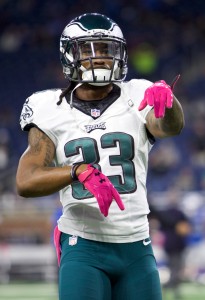
Brooks, 28, followed defensive coordinator Jim Schwartz from Buffalo to Philadelphia prior to the 2016 campaign, inking a three-year deal with the Eagles. Hampered by a quadriceps injury, Brooks only appeared in six total games before being placed on injured reserve. In that limited sample size (235 defensive snaps), Brooks earned poor marks from Pro Football Focus, which assigned him a 40.9 grade.
Brooks had already agreed to a pay cut earlier this year that slashed his 2017 base salary from $1.85MM to $1MM and changed his 2018 season into an option year. Instead, the Eagles will now pick up $1MM in 2017 cap space and incur $250K in dead money. Another $250K dead cap charge will appear on Philadelphia’s books in 2018.
The Eagles have made several trades to acquire cornerback depth this offseason, picking up Ronald Darby from the Bills and Dexter McDougle from the Jets, but the unit is still relatively thin overall. Darby projects as a starter alongside Jalen Mills, while free agent signing Patrick Robinson now appears to have won Philadelphia’s nickel corner job, as Adam Caplan of ESPN.com tweets. Second-round rookie Sidney Jones is also on the roster but may get a late start as he recovers from a torn Achilles, while other Eagles corners include rookie Rasul Douglas, Aaron Grymes, and C.J. Smith.
Buccaneers To Extend QB Ryan Griffin
The Buccaneers have agreed to a one-year extension with backup quarterback Ryan Griffin, locking him up through the 2018 campaign, according to Rick Stroud of the Tampa Bay Times (Twitter link).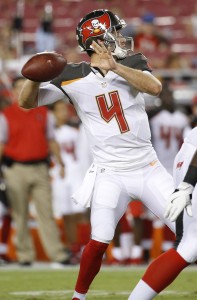
Griffin, 27, was tendered at the original level as a restricted free agent earlier this year. As such, he’d been scheduled to earn $1.797MM for the 2017 season, but that figure could now be adjusted, tweets Stroud. Since entering the NFL as an undrafted free agent out of Tulane in 2013, Griffin has spent time with the Saints’ practice squad and Tampa Bay’s active roster, but has never thrown appeared in a professional game.
Griffin has been set to serve as the Buccaneers’ third quarterback behind Jameis Winston and Ryan Fitzpatrick, but it’s possible he could begin the season on injured reserve after suffering a shoulder injury in Tampa Bay’s preseason opener. The Buccaneers could potentially designate Griffin as an IR/return player, allowing him to return to the club midway through the season.
Browns Release CB Joe Haden
The Browns have released veteran cornerback Joe Haden, the club announced today. Cleveland had been “aggressively” shopping Haden as of yesterday, but evidently wasn’t able to find a taker.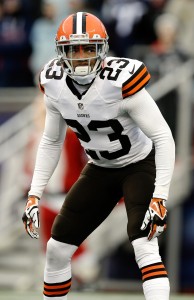
Cleveland’s efforts to trade Haden didn’t start only recently, according to Ian Rapoport of NFL.com (Twitter link), who indicates the team had been marketing Haden for more than year. But the 28-year-old Haden’s contract likely proved a hindrance, as he’s due $11.1MM in 2017 base salary, a figure that includes $4MM in guarantees. That guarantee didn’t kick in until February, tweets Jason Fitzgerald of Over the Cap, so the Browns could have parted ways with Haden before that time and saved that total. However, the club presumably was willing to take the risk of eating that $4MM in the hopes of finding a trade partner.
An acquiring team would have also taken on Haden’s base salaries over the next two seasons: $11.1MM in 2018 and $10.4MM in 2019, though none of that money would have been guaranteed. Haden’s signing bonus proration will now accelerate onto the Browns’ salary cap over the next two campaigns, meaning the club will take on $7.2MM in dead money in 2017 and $3.6MM in 2018. Cleveland attempted to convince Haden to accept a pay cut before releasing him, per Mike Florio of Pro Football Talk (Twitter link), but Haden declined.
Haden’s performance probably wasn’t overly appealing to potential suitors, either, as he’d struggled with both injuries and ineffectiveness over the past several seasons. He missed 14 games from 2015-16, and ranked as just the No. 88 cornerback among 110 qualifiers last year, per Pro Football Focus. Among the 84 qualified cornerbacks in Football Outsiders’ data, Haden finished only 64th in yards allowed per pass (8.2).
The Browns will move forward with free agent acquisition Jason McCourty and 2016 waiver claim Briean Boddy-Calhoun as their starting corners, with Jamar Taylor in the slot. Fourth-round rookie Howard Wilson is also available for depth, while Haden’s release likely opened up a roster spot for a corner such as Trey Caldwell or Marcus Burley to earn space on the squad. Cleveland, which owns the NFL’s No. 1 waiver priority, may also be active in poaching players from other teams during roster cutdowns this weekend.
Haden, for his part, shouldn’t have any trouble finding a new team in relatively short order, and the Saints and Chiefs are among the clubs expected to have “strong interest” in him, reports Adam Schefter of ESPN.com (Twitter link). New Orleans has inquired on Haden before, making a play for him prior to the 2016 trade deadline, but Cleveland’s asking price was reportedly too steep. The Cowboys, too, are eyeing Haden, but aren’t likely to get into a bidding war, per Clarence Hill of the Fort Worth Star Telegram (Twitter link). Haden’s agent, Drew Rosenhaus, told Schefter there is “tons of interest” in his client, and predicted Haden will have a new contract by Thursday (Twitter link).
Offseason In Review: New Orleans Saints
Another year, another massive disparity between the two sides of the Saints’ roster. 2016 marked the third consecutive season in which New Orleans’ offense ranked as top-seven DVOA unit while the club’s defense finished in the bottom-two by the same metric. Closing that gap was atop general manager Mickey Loomis‘ offseason itinerary.
Notable signings:
- Larry Warford, G: Four years, $34MM. $17MM guaranteed.
- Nick Fairley, DT: Four years, $28MM. $9MM guaranteed. $2MM available via incentives.
- A.J. Klein, LB: Three years, $15MM. $5.7MM guaranteed.
- Adrian Peterson, RB: Two years, $7MM. $3.5MM guaranteed. $8.25MM available via incentives.
- Ted Ginn Jr., WR: Three years, $11MM. $3MM guaranteed.
- Alex Okafor, DE: One year, $2MM. $1MM guaranteed.
- Chase Daniel, QB: One year, $900K. Fully guaranteed. $3MM available via incentives.
- Manti Te’o, LB: Two years, $5MM. $600K guaranteed.
- Chris Banjo, S: Two years, $2.85MM. $200K guaranteed.
- Sterling Moore, CB: One year, $900K. $200K guaranteed.
- Rafael Bush, S: One year, minimum salary benefit. $180K guaranteed.
- Michael Mauti, LB: One year, minimum salary benefit. $125K guaranteed.
- Travaris Cadet, RB: One year, minimum salary benefit. $80K guaranteed.
- John Phillips, TE: One year, minimum salary benefit. $80K guaranteed.
- Darryl Tapp, DE: One year, minimum salary benefit. $60K guaranteed.
- Khalif Barnes, T: One year, minimum salary benefit.
- Bryan Braman, DE: One year, minimum salary benefit.
- Justin Drescher, LS: One year, minimum salary benefit.
- Clay Harbor, TE: One year, minimum salary benefit.
- Bryce Harris, T: One year, minimum salary benefit.
- John Hughes, DT: One year, minimum salary benefit.
- Josh LeRibeus, OL: One year, minimum salary benefit.
- Zach Line, FB: One year, minimum salary benefit.
- Tony McDaniel, DT: One year, minimum salary benefit.
- Ryan Nassib, QB: One year, minimum salary benefit.
While Jahri Evans had made nearly every start at right guard for the Saints over the past decade-plus, that won’t be the case in 2017, as New Orleans agreed to a four-year contract with former Lions lineman Larry Warford. Detroit wasn’t successful in the run-blocking game last season (31st in adjusted line yards), but the club was best at rushing up the middle, as it ranked 20th in ALY on runs over the center or guard. While Warford has never lived up to his standout rookie campaign, he’s been a relatively consistent player of the course of his NFL tenure. And the Saints got a good deal: among the top guards available in 2017 (Warford, Kevin Zeitler, T.J. Lang, and Ronald Leary), Warford is the youngest but received the lowest annual salary and cheapest guarantee.
Running behind Warford and the rest of the New Orleans offensive line will be veteran back Adrian Peterson, who landed with the Saints after the Vikings declined his 2017 option. Peterson, of course, was sidelined for two of the past three seasons, first by a child abuse case and then by a torn meniscus. When he was last healthy in 2015, Peterson lead the league with 1,485 yards rushing and 11 touchdowns, but he’s now 32 years old and could struggle to see work based on his lack of ability in the passing game (both as a receiver and a blocker). Peterson also has trouble running out of the shotgun, but that concern could be mitigated with the Saints, as New Orleans ran the ball out of a shotgun formation on only 13% of plays in 2017, 30th among NFL clubs.
Ted Ginn Jr. is another new addition to the Saints’ offense, and he’ll attempt to replicate the Devery Henderson role — deep pass specialist — with Drew Brees and the rest of the New Orleans passing game. Henderson led the NFL in yards per reception twice during his Saints career, and if Ginn can come close to that level of production, New Orleans will assuredly be pleased. In 2016, Ginn posted seven receptions of 30+ yards, four of which went for touchdowns, but he also has infamously unreliable hands, as he finished 13th in drop rate among wideouts with at least 50 targets.
On the defensive side of the ball, the Saints took another swing at finding an edge rusher to play opposite Cameron Jordan by inking former Cardinal Alex Okafor to a one-year pact. Okafor is still only 26 years old and put up eight sacks as recently as 2014, but he’s posted only 5.5 sacks during the past two years and will now be playing defensive end as opposed to outside linebacker. Sacks aren’t the only indicator of pressure, however, and Okafor ranked fourth among 3-4 outside ‘backers in Pro Football Focus‘ pass rush productivity metric a season ago. At the very least, Okafor will provide improvement over what New Orleans was deploying in 2016, and even if his lackluster run defense abilities make him a sub package-only player, Okafor should be a value at his $3MM salary.
The Saints’ linebacking unit will also see some new faces, as both Manti Te’o and A.J. Klein are expected to earn starting jobs. Te’o won’t technically be a full-time player, however, as he’ll start in New Orleans’ base defense before coming off the field on passing downs, meaning he’ll likely play on roughly a third of the club’s defensive snaps. That’s probably a good strategy for Te’o given his health concerns — the former second-round pick has missed a whopping 30 of 64 possible games during his four-year career, mostly due to lower-body injuries. Klein, meanwhile, stays in the NFC South after beginning his career in Carolina, where he mostly served as a reserve and special teams ace behind one of the league’s best linebacker duos in Luke Kuechly and Thomas Davis. He figures to play alongside rookie Alex Anzalone in the Saints’ nickel defense.
Sterling Moore has been a valuable backup cornerback wherever he’s played, but he was stretched as a 12-game starter for the Saints last year. While he ranked as PFF’s No. 64 corner among 110 qualifiers, Moore finished 81st among 84 cornerbacks in Football Outsiders’ success rate. Moore played 76.7% of New Orleans’ defensive snaps (a career high) in 2016, but he will likely get pushed down the club’s depth chart during the upcoming season. The Saints invested a first-round draft choice in fellow corner Marshon Lattimore, while other defensive backs such as P.J. Williams are returning to health, meaning Moore will likely serve as a backup.
Moore was a cost-effective signing, but he wasn’t as cheap as the multitude of minimum salary benefit (MSB) contracts the Saints handed out this spring. As a reminder, MSB deals allow clubs to pay a player the veteran’s minimum based on their years of NFL experience while absorbing the cap charge for a player with only two accrued seasons. New Orleans signed 15 players to such pacts, six more than the next club (the Bears), and even guaranteed some portions of base salaries in those deals. For a team like the Saints that’s consistently up against the salary cap, it’s a smart strategy, as it allowed the team to bring in quality veterans such as Rafael Bush, Tony McDaniel, and Darryl Tapp without forfeiting much cap space.
Details On Matthew Stafford’s Extension
Reacting to the extension the Lions gave Matthew Stafford, Bob Quinn said Tuesday that the quarterback’s presence was one of the reasons he agreed to become the team’s general manager in 2016 (Twitter link via Justin Rogers of the Detroit News). Quinn could now have Stafford under wraps through 2022 on a pact worth up to $151.5MM, according to Mike Florio of Pro Football Talk.
The contract represents a firm three- to four-year commitment, per Florio, who adds that the final two seasons of the accord carry non-guaranteed, team-held options worth $19.5MM and $22.5MM, respectively. Even if the Lions bail on Stafford after 2020, he’ll still have raked in $108.5MM via this agreement. The deal features $92MM in total guarantees and a $50MM signing bonus, Adam Schefter of ESPN tweets. Both of those figures are NFL highs, as are Stafford’s $60.5MM guaranteed at signing and three-year cash flow ($51MM-$67.5MM-$87MM), Tom Pelissero of NFL.com notes (on Twitter).
Here’s the yearly breakdown, courtesy of Florio:
- 2017: Fully guaranteed base salary of $1MM.
- 2018: Guaranteed-at-signing base salary of $9.5MM; guaranteed-for-injury roster bonus ($6.5MM) due on the fifth day of the league year; $500K workout bonus. The roster bonus becomes fully guaranteed on Day 3 of the league year.
- 2019: Base salary ($13.5MM) is guaranteed for injury at signing and becomes fully guaranteed on the fifth day of the 2018 – not ’19 – league year. The $5.5MM roster bonus is guaranteed for injury at signing and, like the base salary, becomes fully guaranteed on the fifth day of the 2018 league year. There’s also a $500K workout bonus.
- 2020: $15MM base salary; $6MM roster bonus that’s guaranteed for injury at signing, becomes fully guaranteed in the 2019 league year and is due on the fifth day of the 2020 league year; $500K workout bonus.
- 2021: $9.5MM base salary, $500K workout bonus.
- 2022: $12.5MM base salary, $10MM roster bonus due on the fifth day of the league year, $500K workout bonus.
NFC Notes: Donald, Brees, Elliott
It’s “probably a safe assumption” the Rams will play their Sept. 10 season opener without defensive tackle Aaron Donald if he doesn’t end his holdout this week, general manager Les Snead told Alden Gonzalez of ESPN.com and other reporters Tuesday (Twitter links here). The executive added that the Rams have tried to “come up with creative scenarios” regarding Donald’s contract in their negotiations with the back-to-back first-team All-Pro. Snead otherwise didn’t have much to offer regarding Donald, admitting that he doesn’t know if the 26-year-old will report without having received a new deal. As of now, it appears the Rams will at least go without Donald when they take on the Colts in Week 1.
The latest on a couple other NFC franchises:
- Saints quarterback Drew Brees said Tuesday that he texted “Wow” to agent Tom Condon after Lions signal-caller Matthew Stafford signed a five-year, $135MM extension Monday (via Mike Triplett of ESPN.com). Stafford’s deal will pay him $27MM per year – a figure the highly accomplished Brees could rival when he signs a new pact in the next eight months or so. Of course, the 38-year-old Brees’ age will prevent him from approaching Stafford’s pact in length or total value. Brees, who’s on the one-year, $24.25MM extension he signed last summer, has indicated that he won’t worry about his next contract until after the season.
- Cowboys running back Ezekiel Elliott‘s appeal hearing with the NFL regarding his six-game suspension will last through Thursday, Adam Schefter reports (Twitter links). Final briefs are due Friday, notes the Washington Post’s Mark Maske, who adds that a ruling probably won’t come until next week.
- Saints cornerback Delvin Breaux is likely to begin the season on injured reserve and come off IR later in the year, Herbie Teope of NOLA.com writes. Breaux, who fractured his fibula in mid-August, won’t be eligible to return until Week 9 if he does head to IR. Teams are allowed to designate two players to return from IR during the season. Meanwhile, it’s possible left tackle Terron Armstead will avoid spending the first six weeks of the season on the reserve/physically unable to perform list because he “might be ready earlier” than that time frame, head coach Sean Payton said Tuesday. Armstead went down with a torn labrum in mid-June and is currently on the active/PUP list.
AFC Notes: Ward, Landry, Flacco, Bengals
Although Broncos head coach Vance Joseph told reporters Tuesday that he “would be surprised” if they traded safety T.J. Ward, his time on their roster is running out, Mike Klis of 9News suggests. Whether the Broncos trade or release Ward, their safety depth makes him expendable, Klis argues. Moving on from Ward would mean jettisoning someone whose reckless style has led to injury issues, as Klis points out that he missed seven games over the previous three years and hasn’t played any preseason games this summer on account of a hamstring strain. While Klis notes that Ward remains a quality player, he nonetheless expects the Broncos to make the difficult decision of parting with a defender who has made two Pro Bowls and started in all 41 of his games during his three-year tenure with the club. Despite Ward’s accomplished resume, both his age (30) and salary ($4.5MM) torpedo his trade value, Klis contends. If the Broncos end up having to cut Ward, they’d avoid paying him any of the $4.5MM he’s owed.
More from the AFC:
- Dolphins coach Adam Gase assured Jarvis Landry this week that he’s not on the trade block – a gesture the wide receiver appreciated. “Coach Gase did an amazing job,” Landry told Steven Wine of the Associated Press. “He called me in and he just talked to me, explained to me the situation and everything that’s going on, and that that’s false (speculation). That’s all I really needed to hear from him.” Regardless of whether the Dolphins have shopped Landry, the contract-year player’s time in Miami could be winding down. Landry informed Wine that he still has no interest in negotiating an extension once the season starts, giving the Dolphins under two weeks to re-sign the prolific pass catcher. They’ve been in no hurry to re-up Landry, though, so it continues to look as if an answer on his future won’t come until next offseason.
- Ravens head coach John Harbaugh updated the statuses of two of his key offensive players – quarterback Joe Flacco and wide receiver Breshad Perriman – on Tuesday, per Jeff Zrebiec of the Baltimore Sun. Flacco, who has been out for over a month with a back injury, is throwing again and “moving toward practice,” according to Harbaugh. Flacco still needs medical clearance to return to the field, but Harbaugh expects him under center for the Ravens’ season opener against Cincinnati on Sept. 10. And the coach is “very optimistic” Perriman will suit up for Week 1. The oft-injured 2015 first-round pick has been unavailable since Aug. 1 because of a hamstring issue.
- Bengals tight end Mason Schreck suffered an MCL injury Sunday that will lead to a lengthy absence and impact the team’s roster decisions, Jim Owczarski of the Cincinnati Enquirer reports (on Twitter). As a seventh-round pick stuck behind Tyler Eifert, Tyler Kroft and C.J. Uzomah on Cincy’s depth chart, Schreck was already facing an uphill battle to make the club before the injury.
Minor NFL Transactions: 8/29/17
Today’s minor moves:
Atlanta Falcons
- Signed: DL A.J. Jefferson
- Waived: WR Bra’Lon Cherry
Chicago Bears
- Waived: DL Kapron Lewis-Moore, LB Alex Scearce
Cleveland Browns
- Released: LB Cam Johnson
- Waived/injured: S Ed Reynolds
Dallas Cowboys
- Placed on IR: CB Leon McFadden
Denver Broncos
- Signed: LB Deiontrez Mount
Indianapolis Colts
- Signed: RB Daryl Richardson, RB De’Mard Llorens
- Waived: TE Steven Wroblewski
- Placed on IR: RB George Winn
New England Patriots
- Waived: LB Christian Kuntz
New Orleans Saints
- Placed on IR: TE John Phillips
Pittsburgh Steelers
- Placed on IR: LB Keion Adams
- Waived: DE Christian Brown, TE Phazahn Odom
San Francisco 49ers
- Waived: LB Sean Porter
NFC East Notes: Cousins, Foles, Cowboys
The record-setting contract extension the Lions awarded quarterback Matthew Stafford on Monday will raise Redskins signal-caller Kirk Cousins‘ asking price and make it even more difficult for the team to re-sign him at season’s end, Mike Jones of the Washington Post points out. With Cousins scheduled to hit free agency next winter, the Redskins could place the franchise tag on him for a third straight year if there’s no deal in place prior to free agency, but that would mean guaranteeing him upward of $34MM. Jones expects the Redskins to apply the transition tag for a lesser cost – $28MM – and ultimately lose Cousins to a team willing to give him a massive long-term deal. The Redskins wouldn’t be entitled to any compensation in that scenario.
More from the NFC East:
- Eagles quarterback Nick Foles hasn’t taken the field this preseason because of an elbow injury. Specifically, Foles has a flexor strain and inflammation around a nerve in his right elbow, a source told Les Bowen of Philly.com. While the source indicated that Foles had the same problem during his time with the Chiefs last year, it won’t affect his place on the Eagles’ roster or his regular-season availability, Bowen notes. The plan remains for him to back up Carson Wentz beginning in Week 1.
- Cowboys tight end Rico Gathers has been dealing with a concussion for two weeks and could head to injured reserve as a result, Drew Davison of the Fort Worth Star-Telegram writes. An IR placement for Gathers would keep him out of game action for at least the first eight weeks of the season and deprive Dallas of a burgeoning weapon. The former Baylor basketball player and 2016 sixth-round pick was a shoo-in to make the Cowboys’ 53-man roster prior to his injury, Davison relays. Gathers’ absence would leave the Cowboys with the experienced James Hanna as their No. 2 tight end behind Jason Witten, though he’s coming off a season lost to injuries and isn’t a receiving threat.
- Owner Jerry Jones says that Jaylon Smith will have an “accelerated approach” towards the upcoming season (Twitter link via Clarence Hill of the Star-Telegram). That’s a departure in philosophy from before, when Jones said the team would be deliberate in its approach with the Notre Dame product.
- Tight end Will Tye, defensive ends Kerry Wynn and Romeo Okwara, wide receiver Dwayne Harris, kicker Aldrick Rosas and offensive lineman D.J. Fluker aren’t sure bets to make the Giants’ roster and could be on the block, James Kratch of NJ.com observes. Although, given that trades in the NFL are rare and nobody from that group holds much appeal, Kratch doesn’t expect Big Blue to make any deals in the coming days.
Dallas Robinson contributed to this post.

